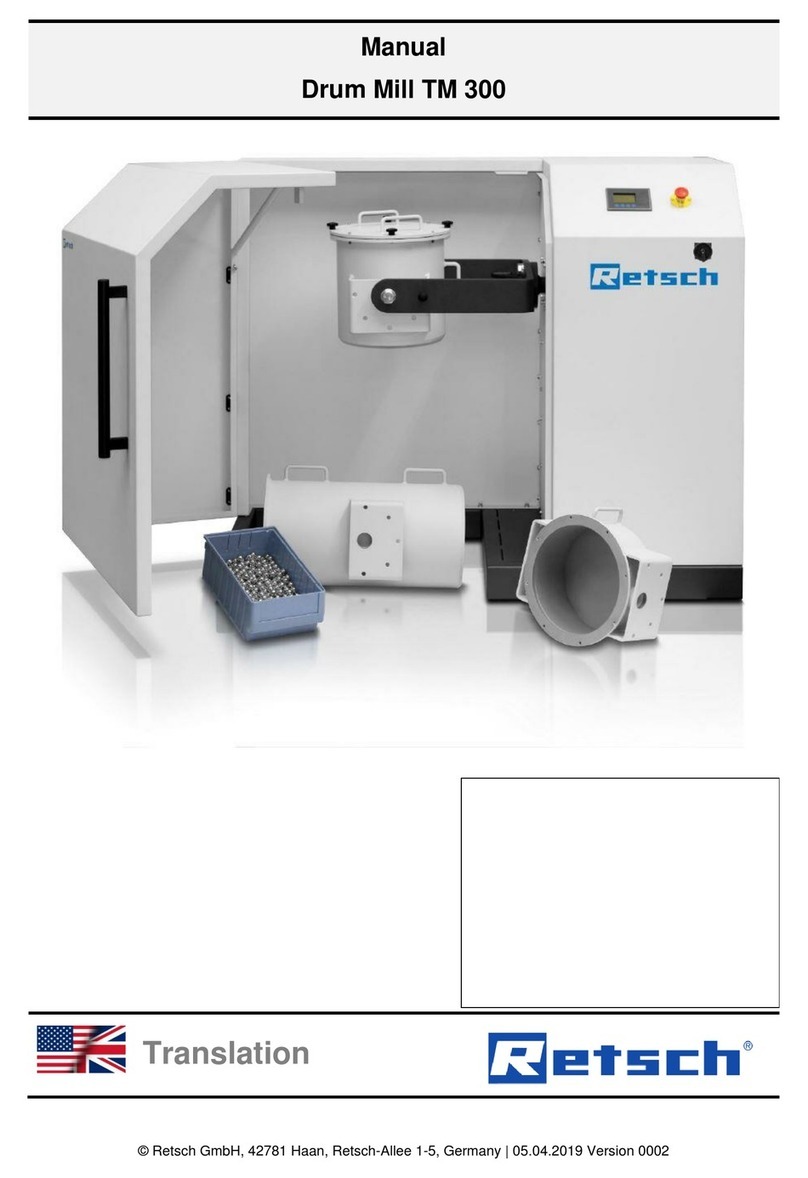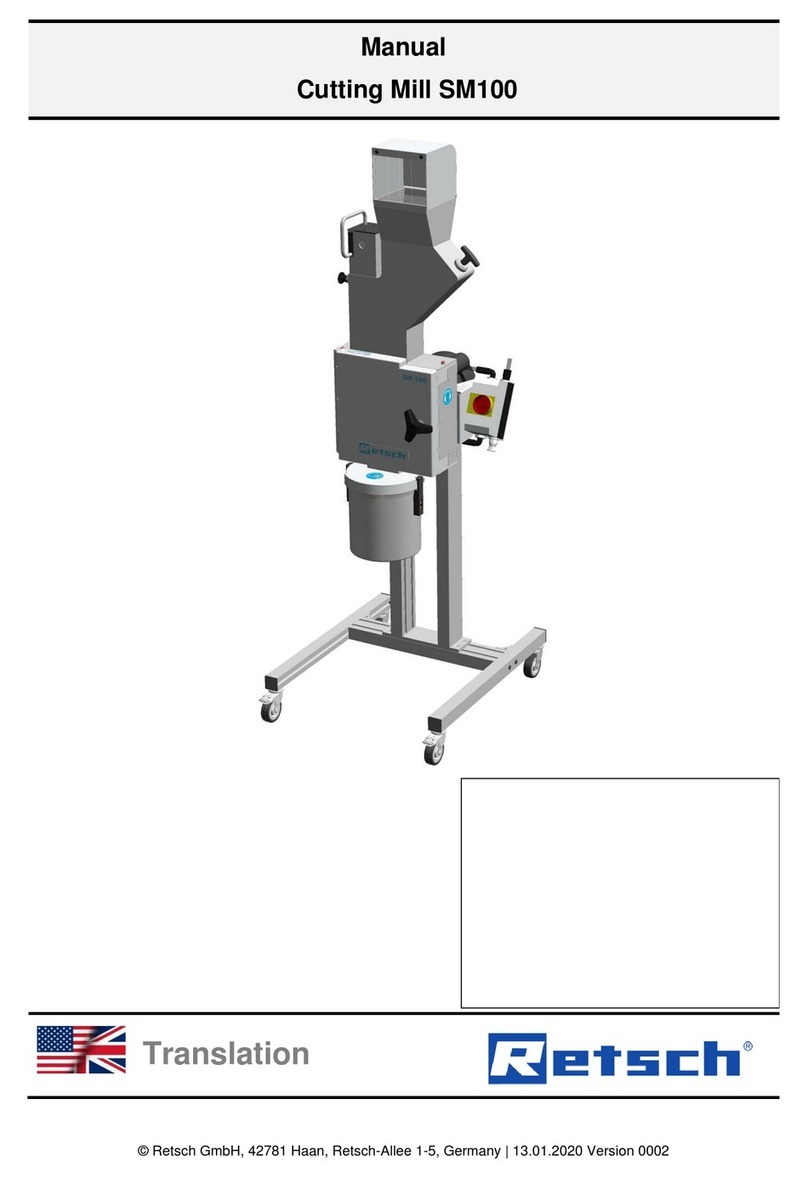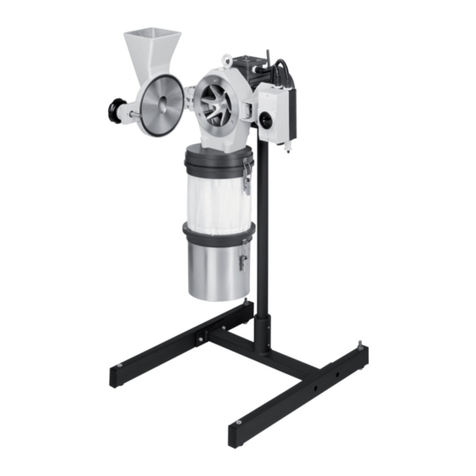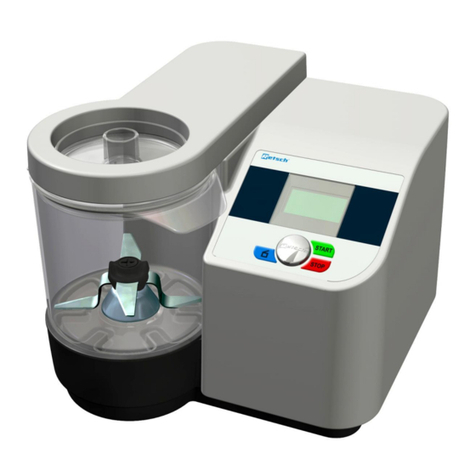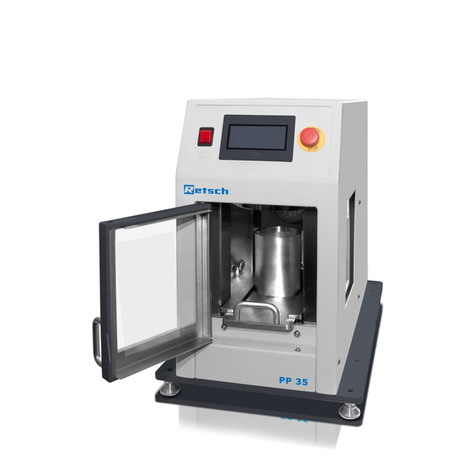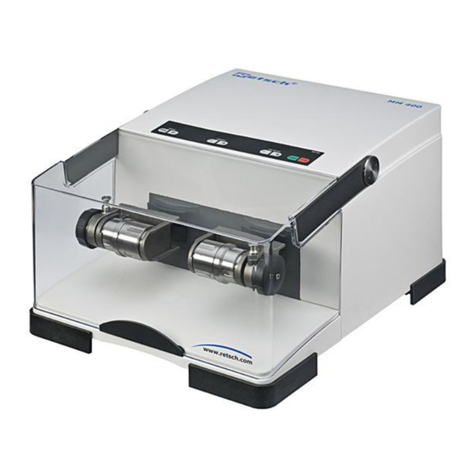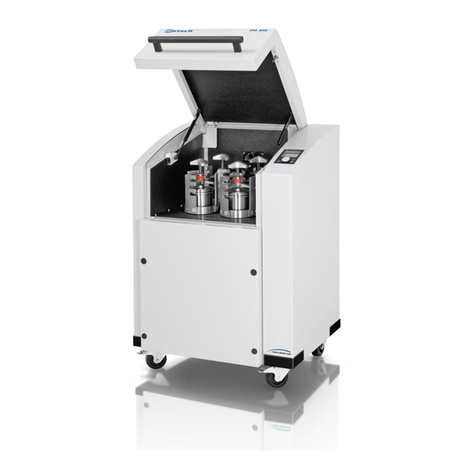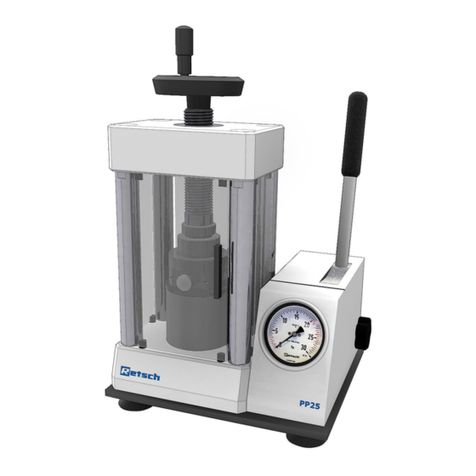
15.11.2006 Retsch GmbH 2 Doc. Nr. D 98.725.9998
Notes on these operating instructions......................................... 3
Warning instructions............................................................... 3
Repairs................................................................................. 3
Safety ......................................................................................... 4
Safety instructions ................................................................. 4
Safety instructions –summarised, part 1 .................................. 5
Safety instructions –summarised, part 2 .................................. 6
Confirmation ......................................................................... 7
Technical data ............................................................................ 8
Use according to the intended purpose...................................... 8
Milling cup –nominal volume................................................... 8
Maximum charged grain size ................................................... 8
Driving power........................................................................ 8
Motor speed .......................................................................... 8
Emissions ............................................................................. 9
Materials and analyses of milling tools ...................................... 9
Systems of protection ............................................................. 9
Protective equipment.............................................................. 9
Mode of operation .................................................................. 9
Machine dimensions ............................................................... 9
Required floor space............................................................... 9
Transport and installation........................................................... 10
Packing ................................................................................ 10
Transport.............................................................................. 10
Temperature variations........................................................... 10
Temperature variations........................................................... 11
Intermediate storage .............................................................. 11
Erection ................................................................................ 11
Parameters for the place of installation ..................................... 11
Ambient temperature: 5°C to 40°C........................................... 11
Atmospheric humidity ............................................................. 11
Installation height: max. 2000 m above sea level ....................... 11
Transport safety device........................................................... 11
Electrical connection............................................................... 12
Important instructions for electrical connection .......................... 13
Serial interfaces..................................................................... 13
Operation ................................................................................... 14
Connecting the power supply ................................................... 14
Opening / closing / emergency unlocking .................................. 14
Insertion and clamping of the milling set of the RS200 ................ 15
Preparation of the milling process............................................. 16
Before starting the RS200 ....................................................... 18
Suitable milling sets for the RS200 ........................................... 18
Milling set filling level ............................................................. 18
Guide values for material quantity and grain size ....................... 18
Cleaning the milling cups ........................................................ 19
Drying the milling cups ........................................................... 19
Operation via the display unit of the RS200 ............................... 20
Symbols in the display unit...................................................... 20
Setting possibilities via the display menu .................................. 21
Languages ............................................................................. 21
False language selection .......................................................... 21
Manual operation .................................................................... 21
Milling programme .................................................................. 21
Milling time ............................................................................ 21
Speed ................................................................................... 21
Speed with agate .................................................................... 22
Starting time .......................................................................... 23
Opening automatic .................................................................. 23
Warning sound ....................................................................... 23
Service .................................................................................. 23
Contrast / Brightness............................................................... 24
Date / Time............................................................................ 24
Stand-by monitor.................................................................... 24
Fault signals in the display ......................................................... 25
F02 to F13 ............................................................................ 25
General....................................................................................... 26
Cleaning ............................................................................... 26
Maintenance.......................................................................... 26
Maintenance of the rubber springs............................................ 26
Opening the cover.................................................................. 27
Wearing parts........................................................................ 27
Copyright.............................................................................. 27
Alterations ............................................................................ 27
